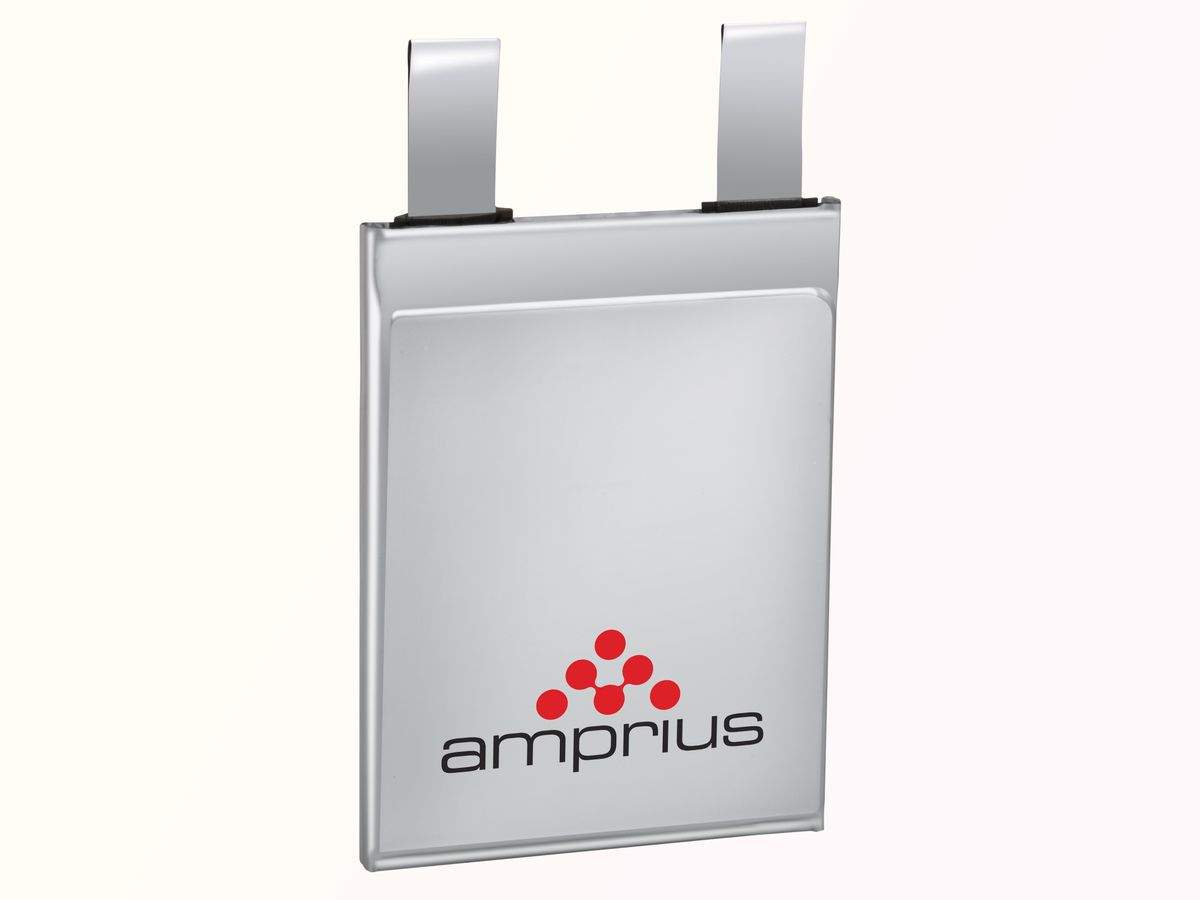Of all the elements in the periodic table, silicon has the highest capacity for combining with lithium. It can hold 10 times as many lithium ions than the graphite anodes common in today’s lithium-ion batteries. Several carmakers and battery startups are looking at silicon anodes for the next generation of long-range, lightweight EV batteries.
And now Amprius Technologies, in Fremont, Calif., reports a silicon-anode battery with almost twice the energy density of most EV batteries today. The new battery’s record-high 500 watt-hours per kilogram energy density was verified by Mobile Power Solutions, an independent test and verification lab in Beaverton, Ore.
“Typical batteries used by Tesla and others are in the 250- to 300-Wh/kg range,” says Ionel Stefan, CTO of Amprius. “With our cells, you will have double the driving range for the same vehicle weight. Or you could keep the same range and have a lighter battery so the mileage efficiency of the car increases.”
But cars are further down the road for Amprius. The company is initially targeting aviation applications geared towards defense. Airbus uses Amprius batteries in its fully solar-electric high-altitude platform station, called Zephyr, for telecommunications and Earth observation. BAE Systems is using the batteries in its uncrewed surveillance aircraft.

The next target market is commercial electric flight, says Stefan, including drones and urban air transport. Air taxis need batteries that can pack a lot of energy per weight and also deliver that energy quickly. “Flying vehicles have to take off and land and in both cases need high power. It’s like a car that accelerates really, really fast,” he says.
Silicon anodes are perfect for this. They can store 3,600 milliampere-hours per gram of lithium in theory, compared with graphite’s 372 mAh/g. They are also very thin and porous, so ions go in and out of the structure very quickly, giving a fast charge and a high-power discharge. For instance, in December 2021 Amprius demonstrated battery charging to 80 percent in 6 minutes.
The company’s high energy and power numbers come from its use of pure silicon, Stefan says. Competitors such as Sila Nanotechnologies, Group14 Technologies, and OneD Battery Sciences combine silicon, either as spherical particles or nanowires, with graphite. But Amprius grows silicon nanowires directly from the current collector substrate, and does not mix any graphite or binders, which speeds up the movement of lithium ions.
When silicon anode batteries will actually take off in air taxis and EVs remains to be seen, however. Amprius was founded in 2008 based on research out of Stanford. Improvements in materials and cell design have boosted performance slowly and steadily since then, and energy density has gone up by about 10 percent a year over the last decade, Stefan says.
But high cost and low production volume of pure silicon anodes are the hurdles that now lie ahead, Stefan says. The company currently produces batteries at small pilot scale. Stefan did not share a cost figure for the company’s silicon-anode technology, but he said cost is not a big factor in niche aviation applications like the Zephyr platform.
Amprius says it plans to ramp up manufacturing to make large enough batteries at a reasonable cost for flying taxis. In early March, the company announced a letter of intent for a facility in Brighton, Colo. that will be capable of producing 5 gigawatt-hours of silicon anode-based lithium-ion batteries. The facility, which will open in 2025, is funded in part by a US $50 million grant received in October 2022 from the U.S. Department of Energy.
Breaking into the EV market will require an even lower unit cost, which will take longer, Stefan says. “The gap between what we have achieved and where the industry is at this time is really large,” Stefan says. “It’s pretty much a different technology. It’s like comparing lithium-ion with nickel-metal-hydride or lead-acid. It’s really that kind of jump.”
Prachi Patel is a freelance journalist based in Pittsburgh. She writes about energy, biotechnology, materials science, nanotechnology, and computing.



